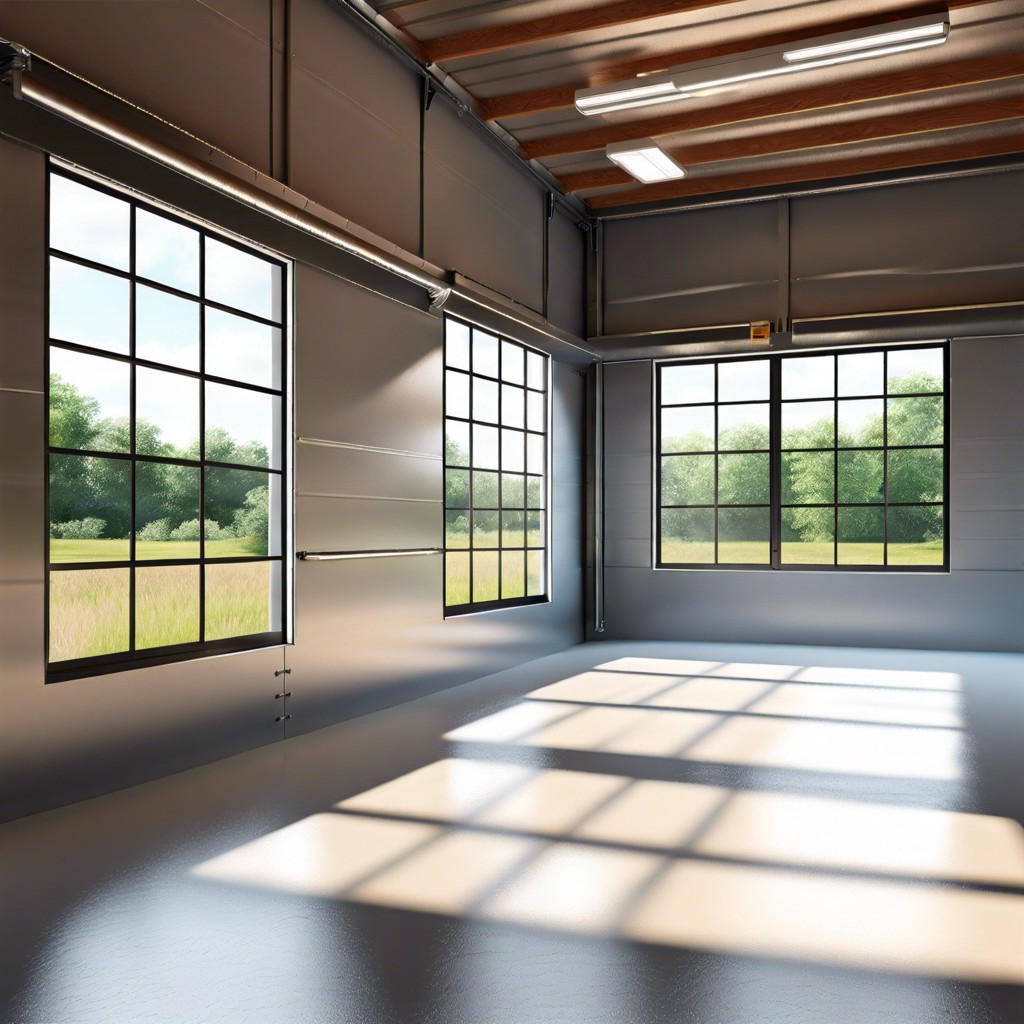Discover the essential tips and tricks to ensure your garage is properly ventilated for a healthier, more comfortable space.
Key takeaways:
- Good ventilation prevents mold, mildew, and rust.
- Use natural or mechanical systems for fresh air.
- Install exhaust fans opposite of fresh air sources.
- Regular maintenance ensures efficient and effective airflow.
- Don’t block vents or ignore building codes.
Importance of Ventilation

Good garage ventilation ensures a fresh and safe environment. Stale air can cause moisture buildup, leading to mold and mildew. Nobody wants their tools rusting away in a damp dungeon.
Proper airflow also helps in removing harmful fumes from car exhausts, paints, and solvents. Breathing those in is definitely not on anyone’s to-do list.
It keeps the temperature in check, making it bearable when you need to grab a wrench or work on a project. No more feeling like a rotisserie chicken in summer or a popsicle in winter.
Types of Garage Ventilation Systems
Ventilation systems for garages can be categorized into two major types: natural ventilation and mechanical ventilation.
Natural ventilation uses the age-old magic of air flow, relying on vents, windows, and doors to let fresh air in and stale air out. Think of it as Mother Nature lending a hand. Install wall vents or louvered doors to keep the air moving without much effort. Easy, breezy!
Mechanical ventilation is a bit more high-tech and involves devices like exhaust fans and air exchangers. These gadgets actively push out the bad air and pull in the good stuff. Exhaust fans are common and can be mounted on walls or the ceiling. They’re super effective, especially if you’re working up a sweat with power tools or hanging out with some stinky paint fumes.
So there you have it: nature’s way or the power of technology. Mix and match for the perfect balance of fresh air!
How to Install an Exhaust Fan
First, locate the optimal spot for the exhaust fan. Usually, it’s the opposite side of where fresh air enters to create a smooth airflow. Measure the dimensions of the fan to mark the exact cutout on the wall or ceiling.
Next, cut the opening. A jigsaw works wonders for wall cutouts, while a drywall saw will handle the ceiling. Ensure the opening is precise to avoid any gaps.
Now, mount the fan. Securely attach the fan to the opening using screws, and make sure it’s level. Safety first—don’t skimp on the fasteners.
Then, connect the wiring. Follow the manufacturer’s instructions: usually, it involves connecting the fan’s wires to the main power supply. If wiring isn’t your jam, consider hiring an electrician.
Lastly, seal around the fan. Use caulk to seal any tiny gaps around the fan to prevent air leaks. This step ensures your ventilation setup works efficiently.
There you have it! Fresh, breathable air in your garage—with no extra hot air involved!
Additional Ventilation Tips
Keep the garage clutter-free to allow air to circulate freely. Stack those old boxes somewhere else.
Crack open the garage door a smidge. Sometimes, that’s all it takes to let the fresh air party in.
Use weather-stripping around doors and windows. This keeps out the bad stuff while your ventilation system does its magic.
Green thumbs up! Adding some potted plants that love low light can naturally freshen the air.
Regularly check and clean your vents and fans. Dust bunnies and spiderwebs are freeloading blockages. Evict them!
Keep in mind the seasons. Adjust ventilation based on temperature and humidity. Who doesn’t love a refreshing breeze in the summer and a cozy feel in the winter?
Common Mistakes to Avoid
Neglecting regular maintenance is a classic blunder. An exhaust fan clogged with dust bunnies isn’t doing anyone any favors. Clean those filters, folks.
Choosing the wrong fan size is another frequent folly. It’s like trying to cool down a blazing bonfire with a birthday candle. Make sure the fan fits the size of your space.
Blocking vents with storage? Don’t even think about it. Your prized collection of holiday decorations isn’t worth a ventilation fail. Keep vents clear and air flowing freely.
Overlooking natural ventilation options like windows or vents is a missed opportunity. Mother Nature is the original ventilation expert – let her help you out.
Finally, forgetting to check local building codes can land you in hot water. Always ensure compliance; no one wants a project halted by a code inspector.